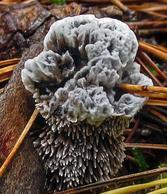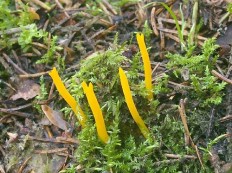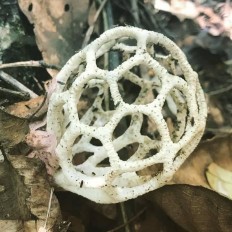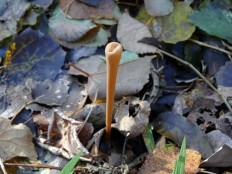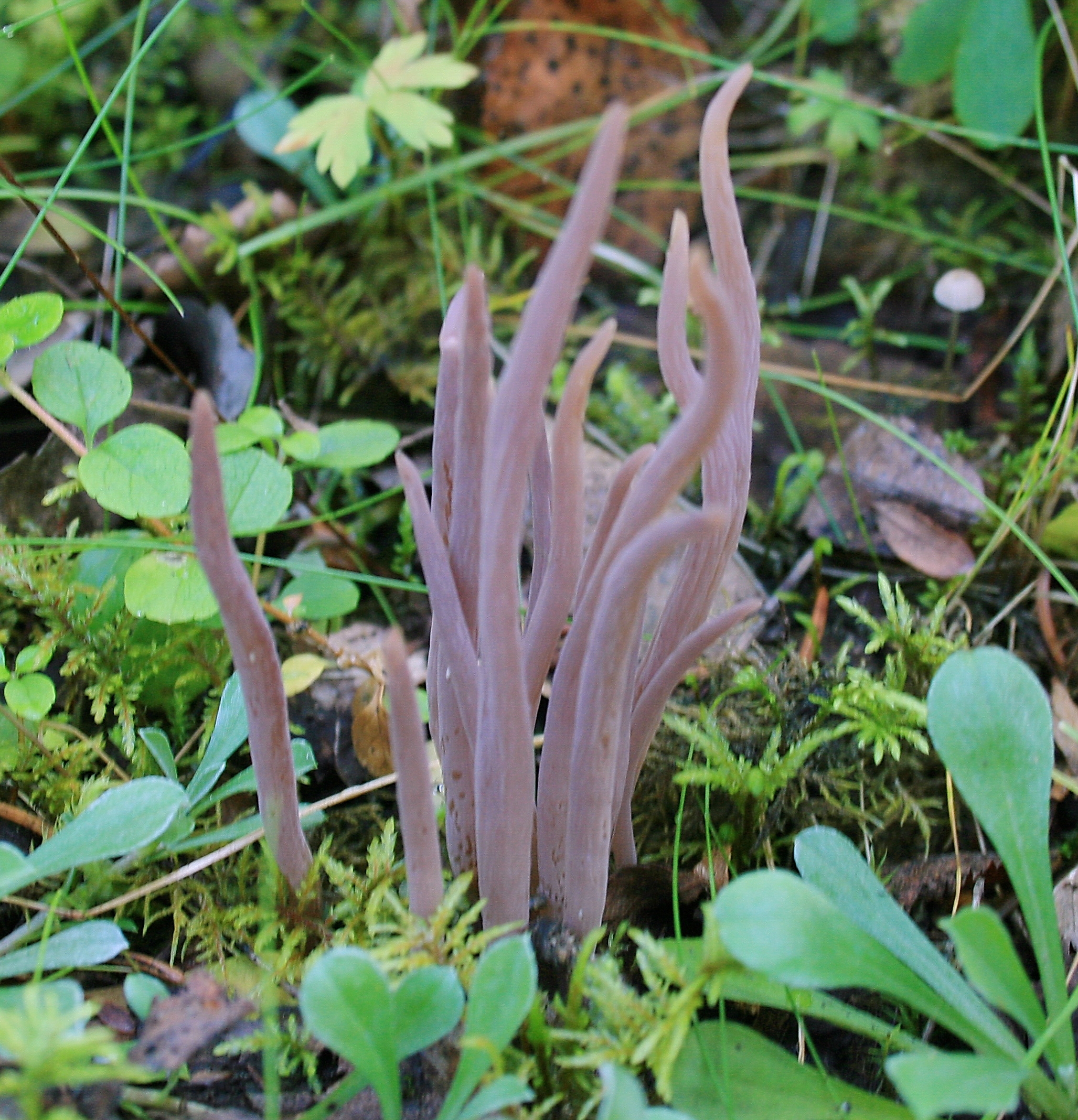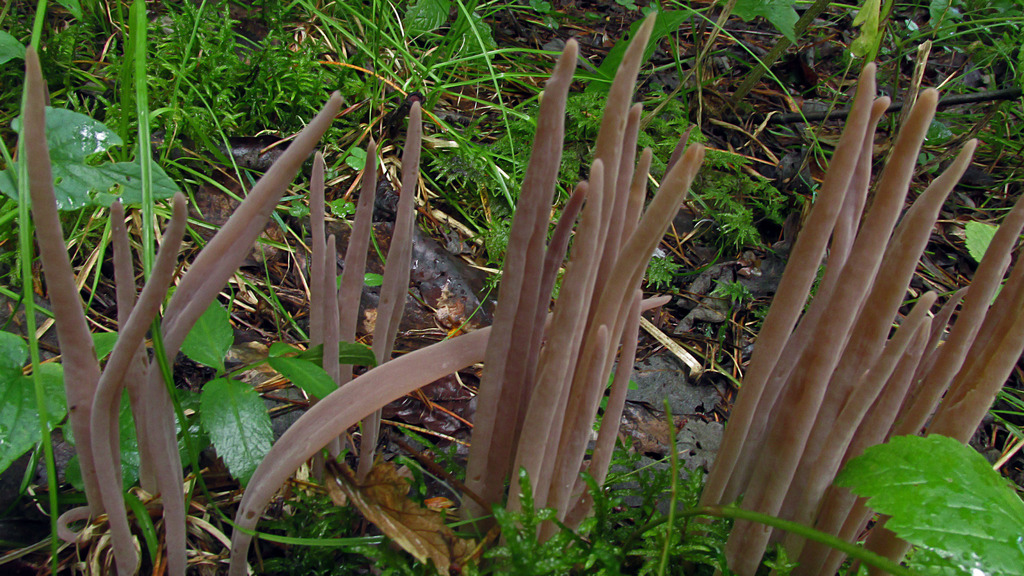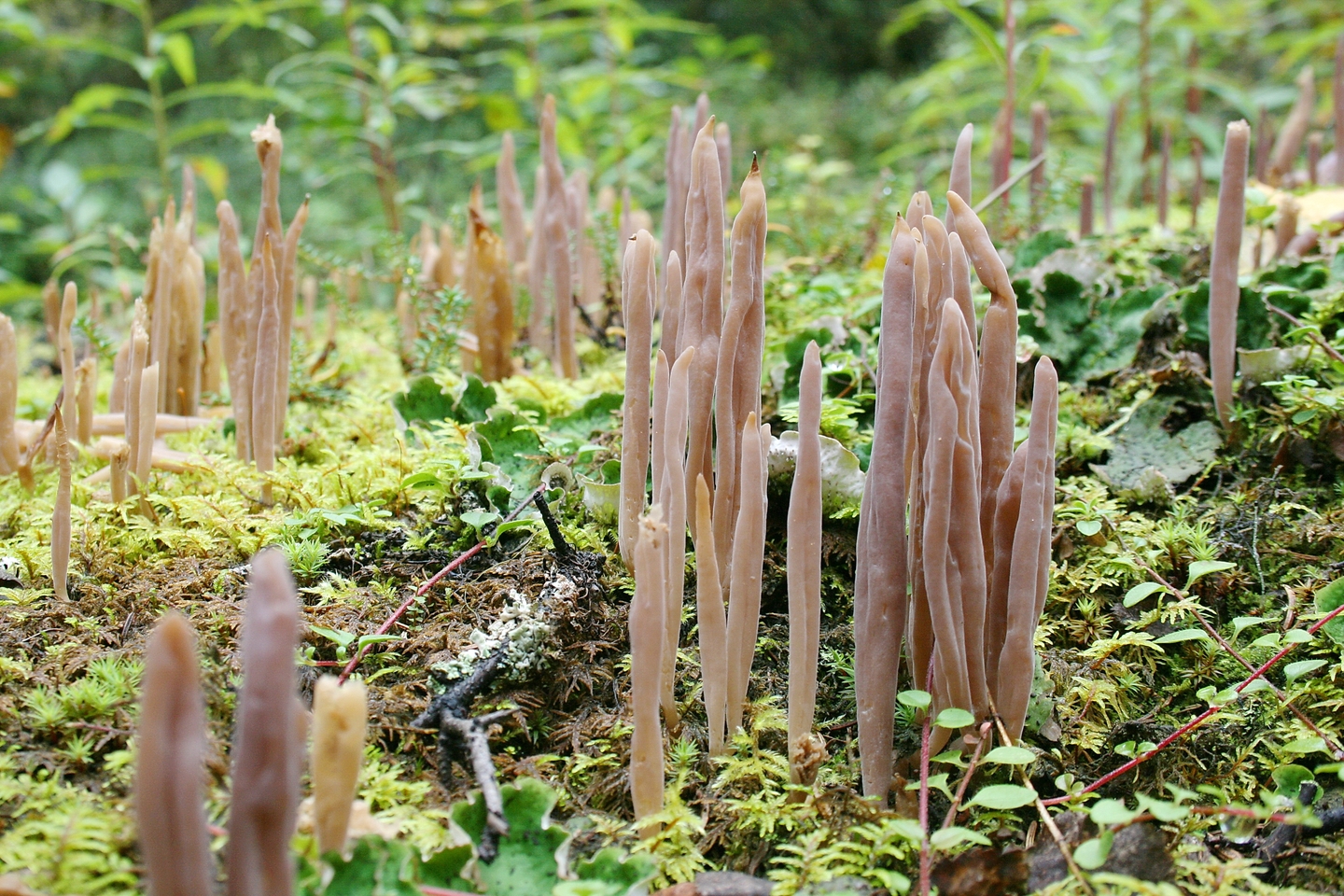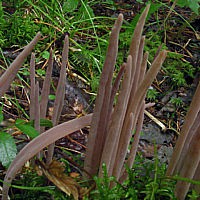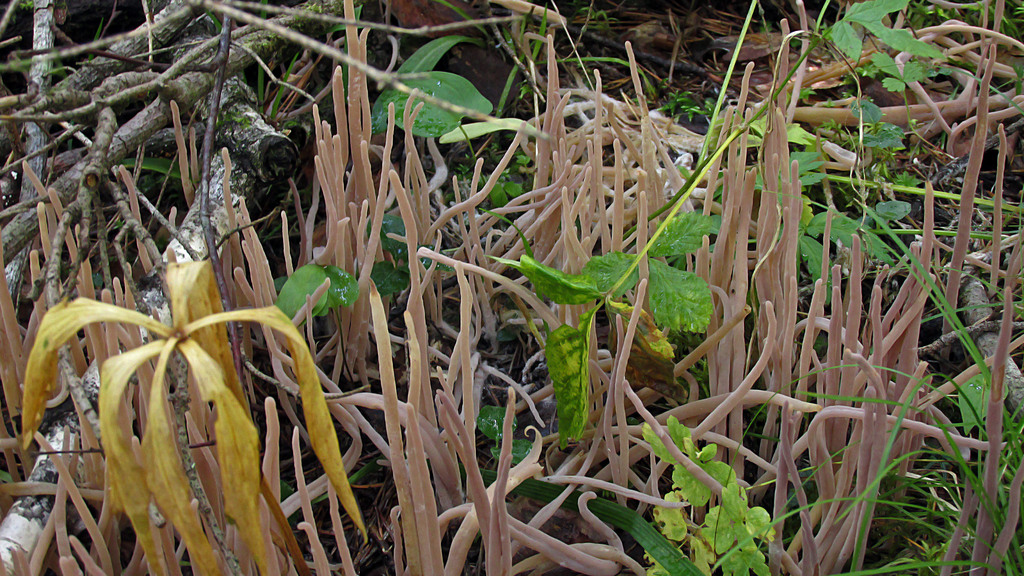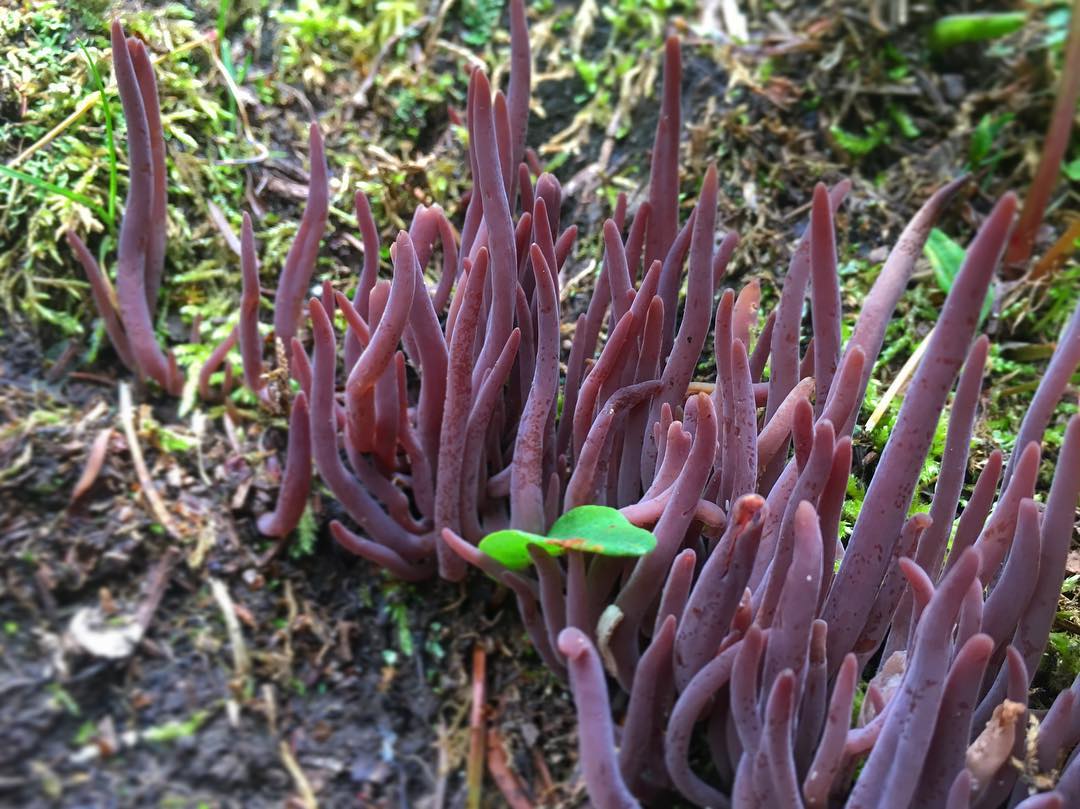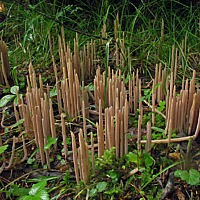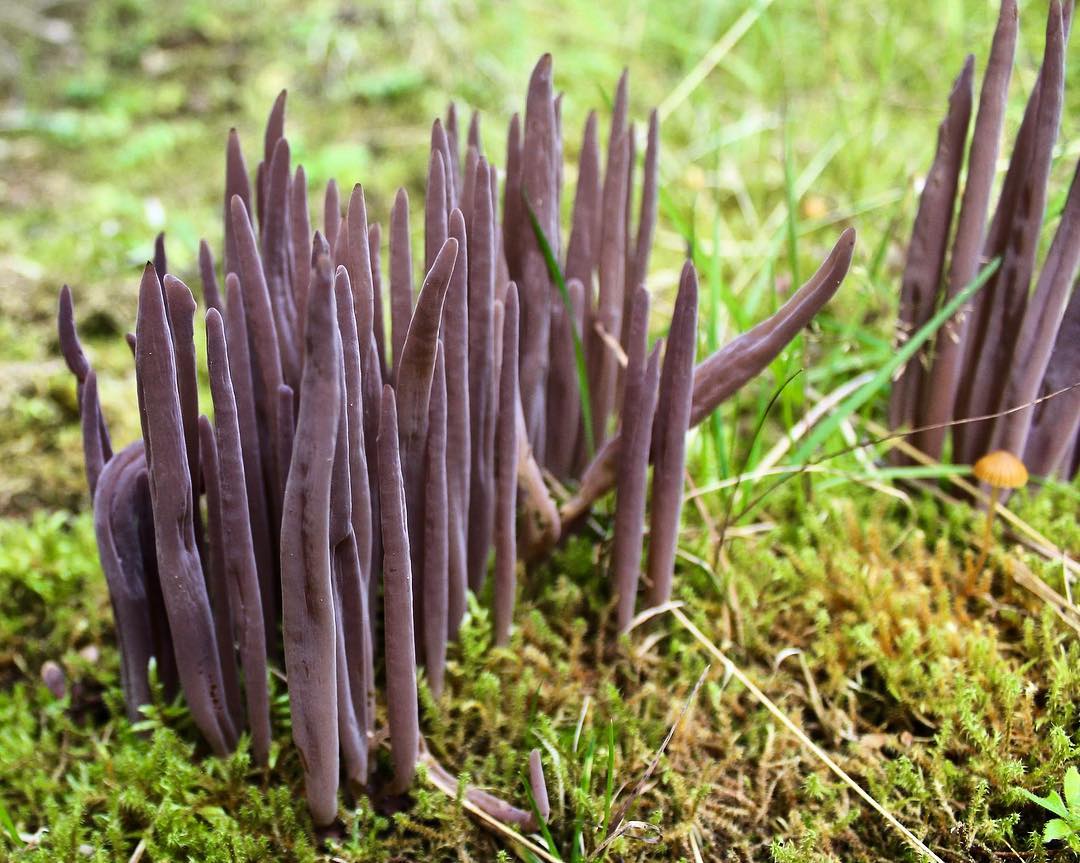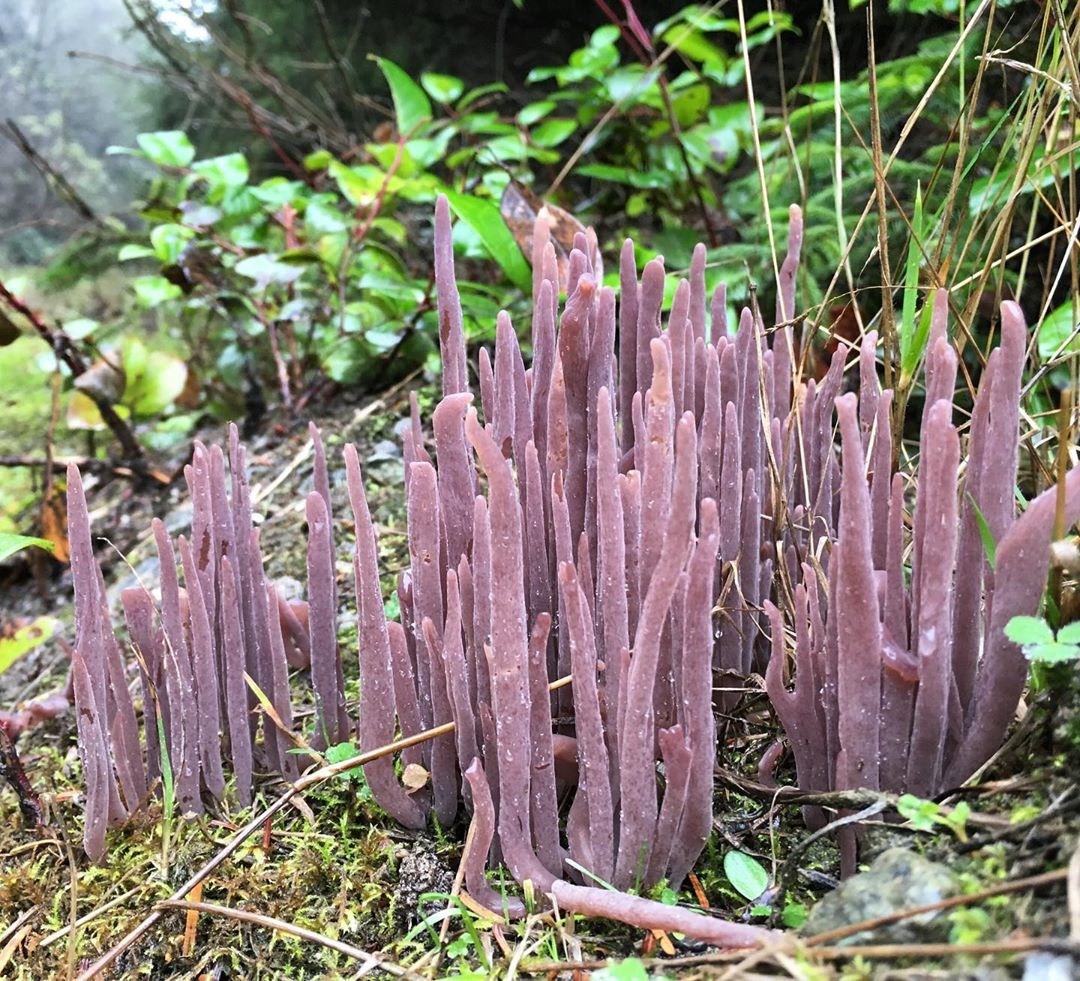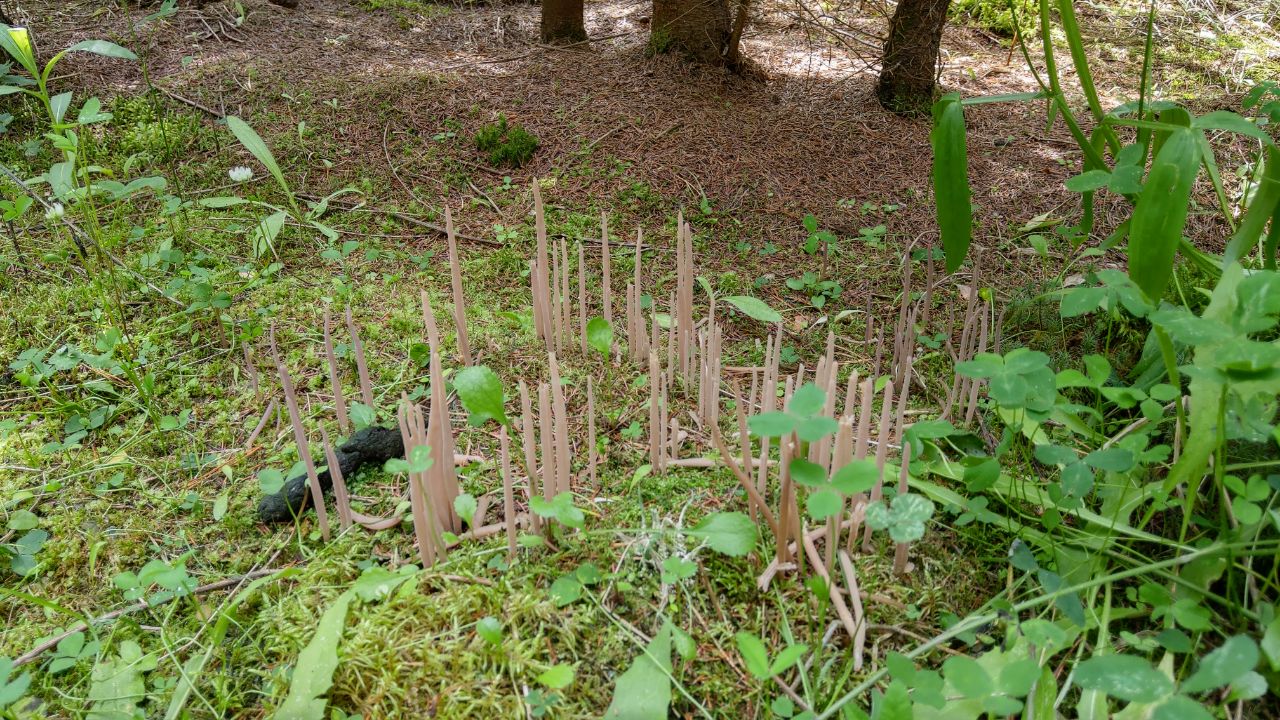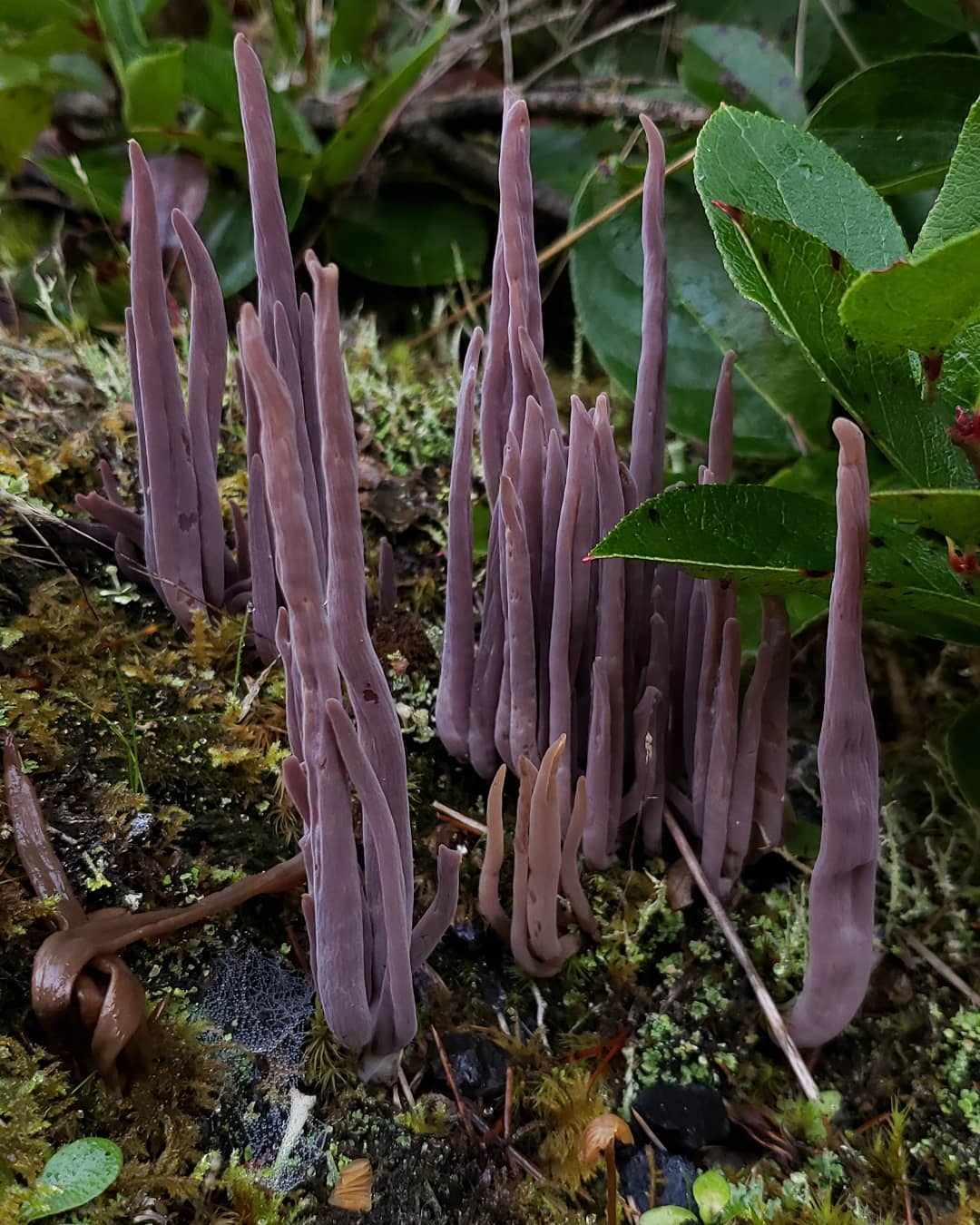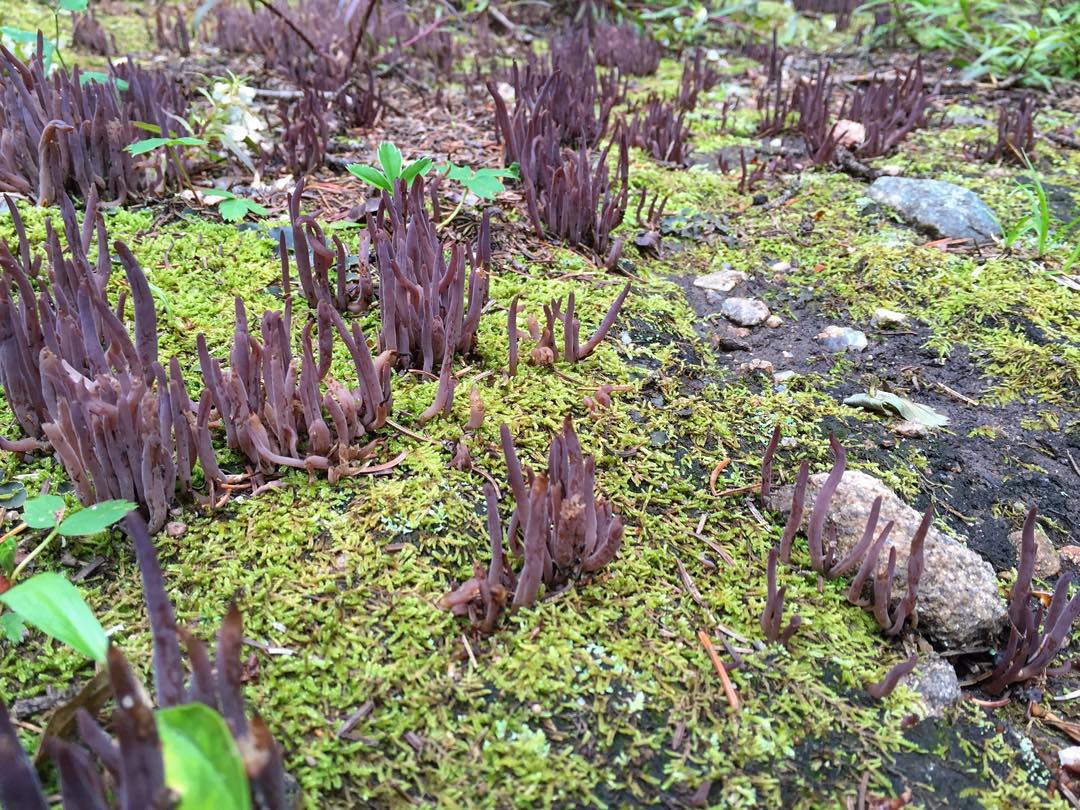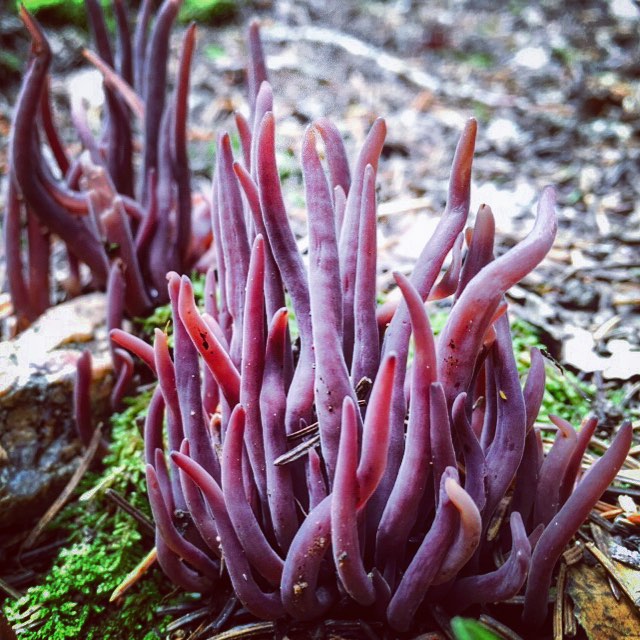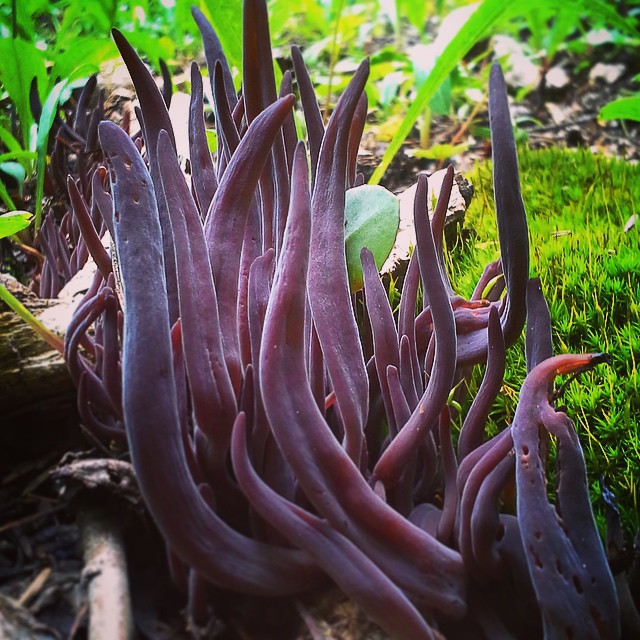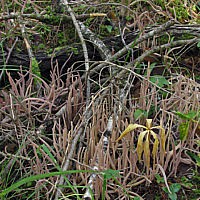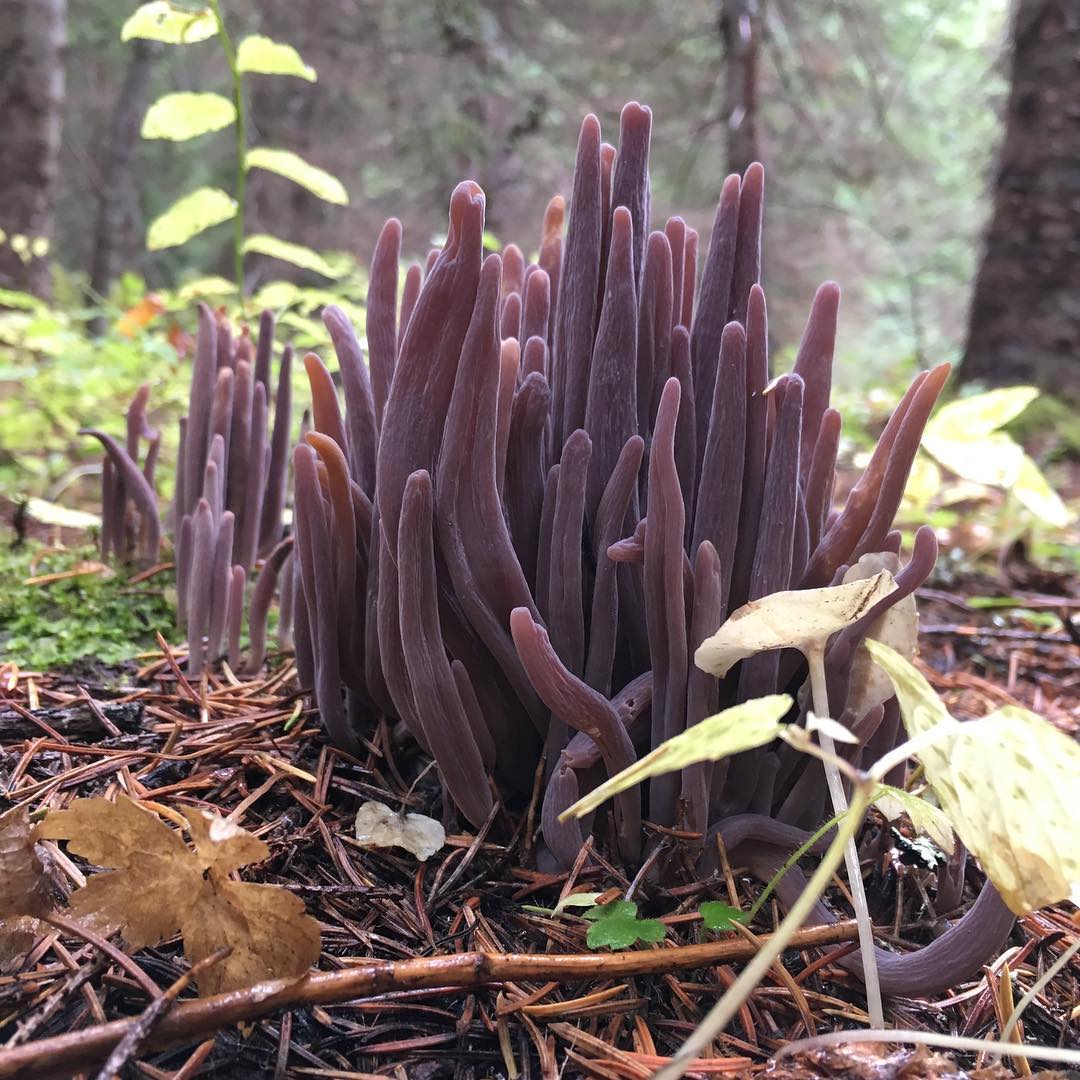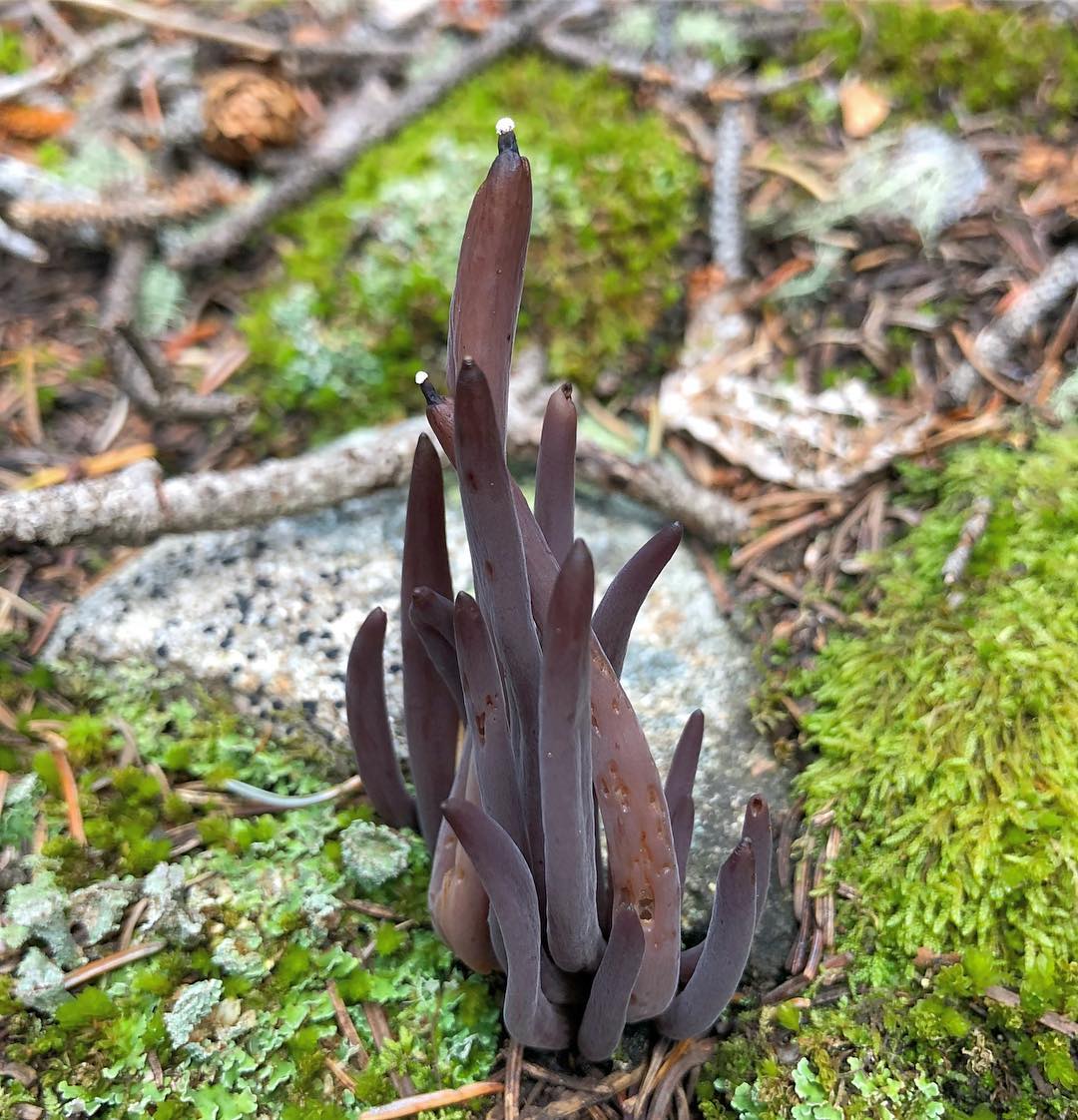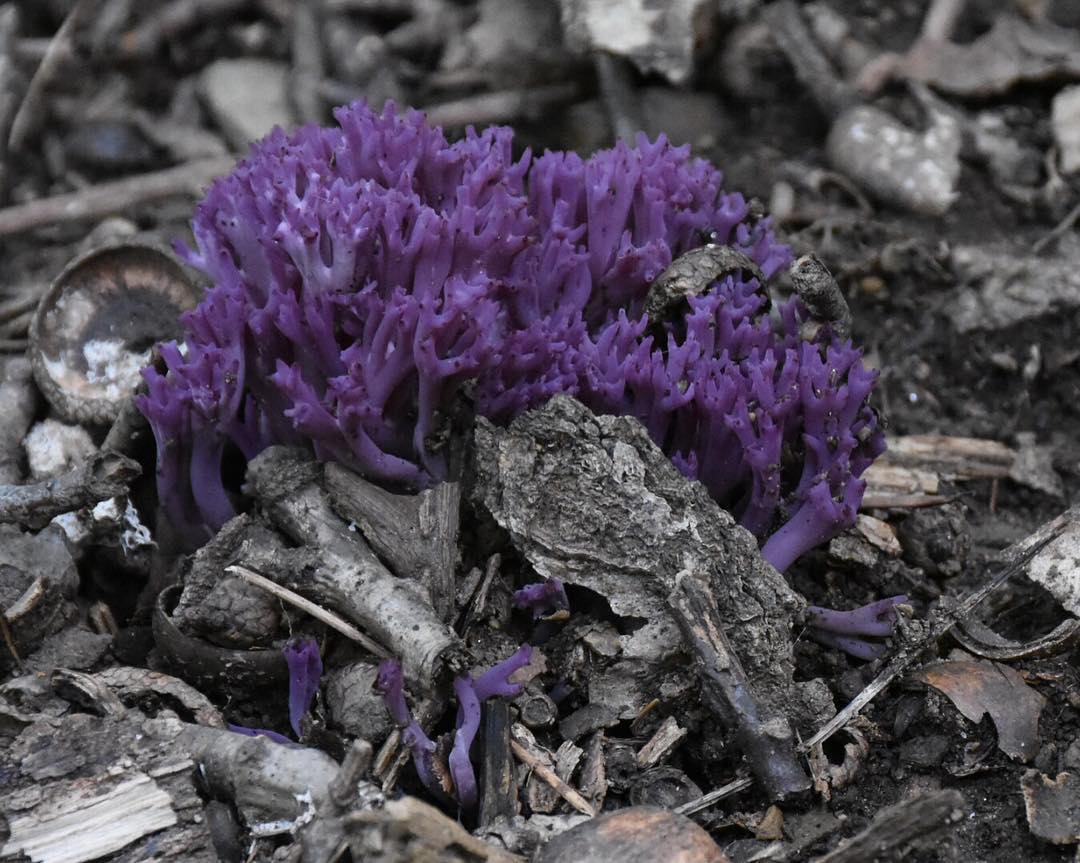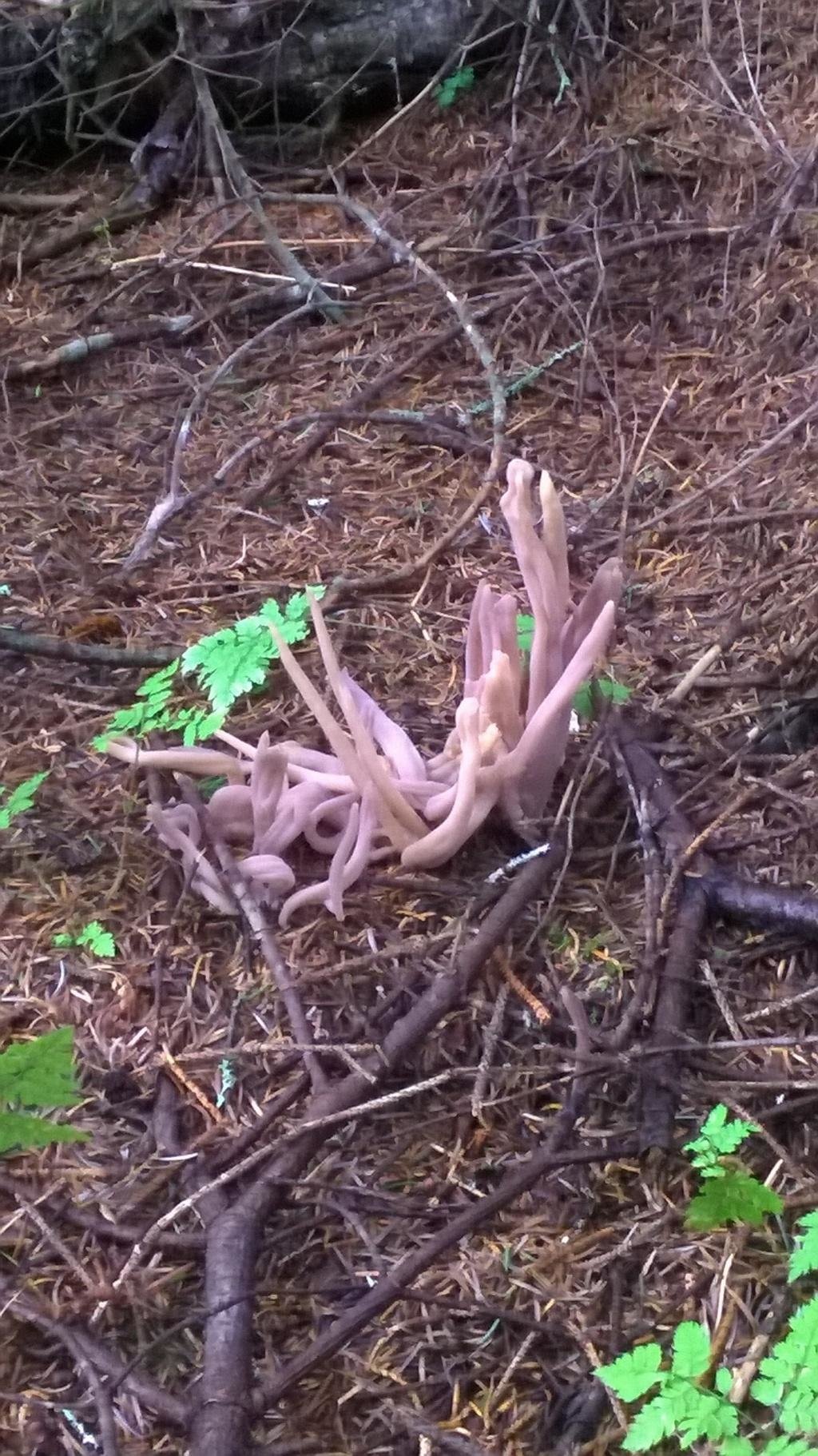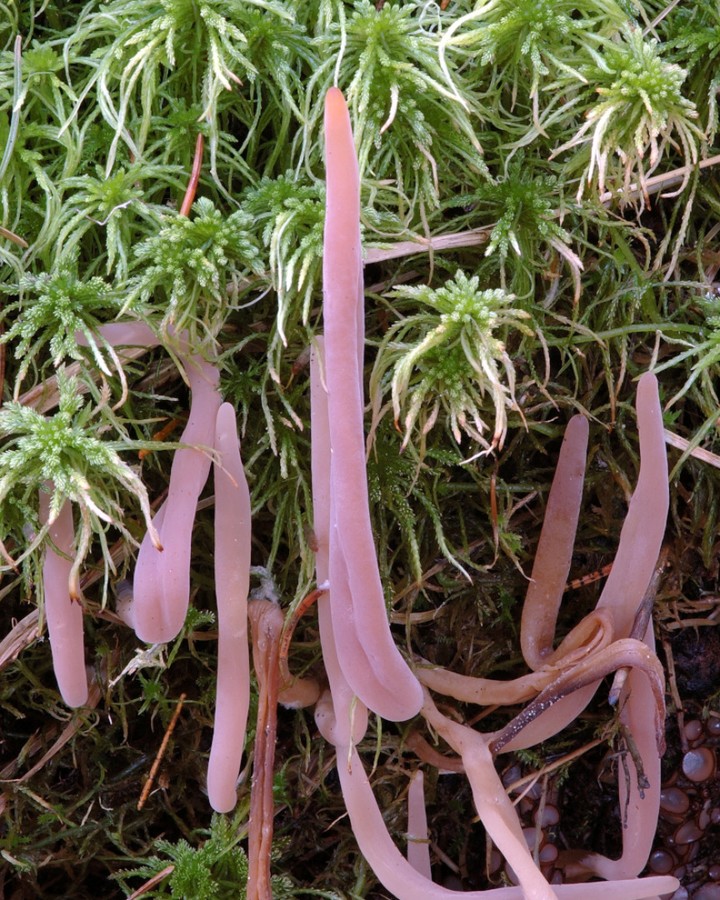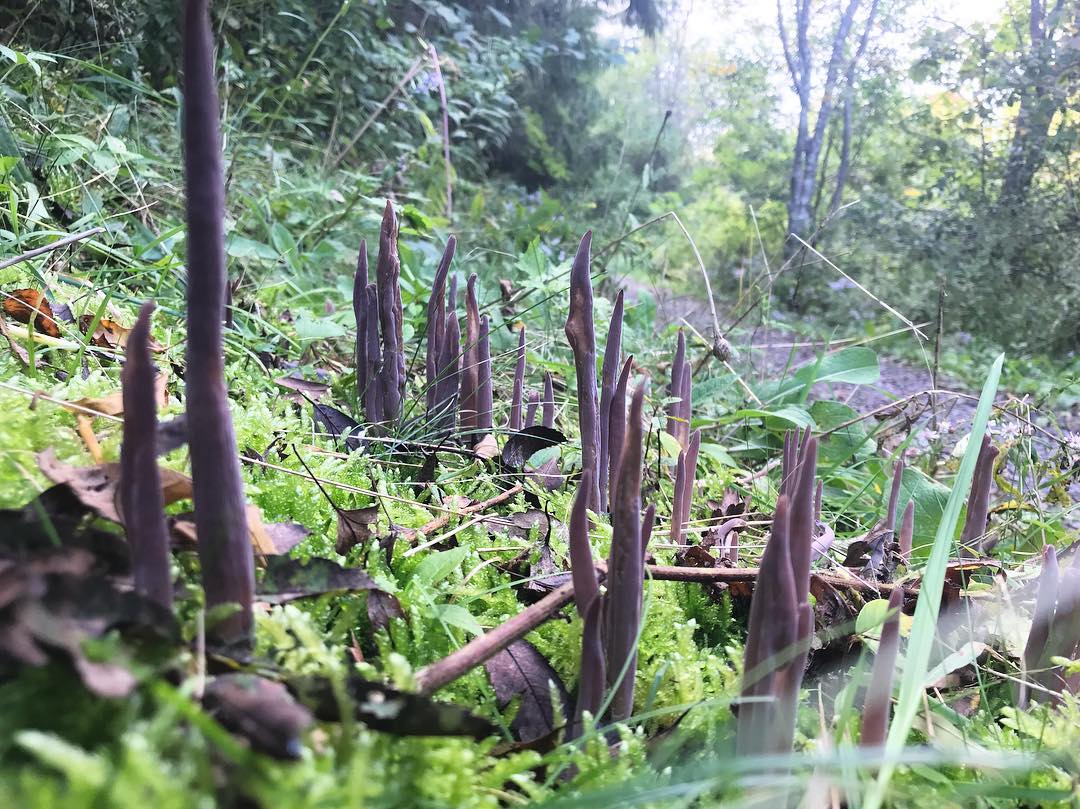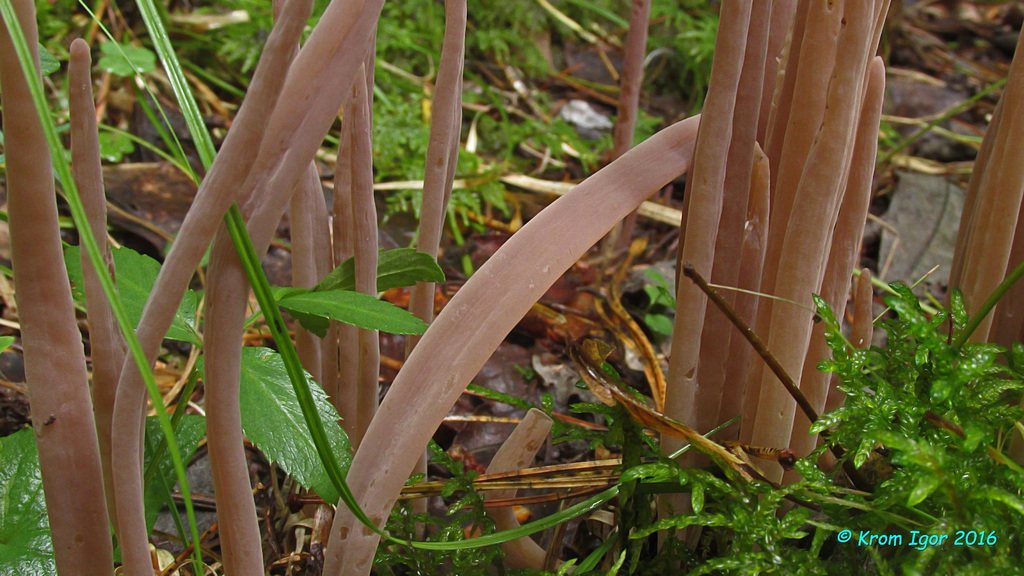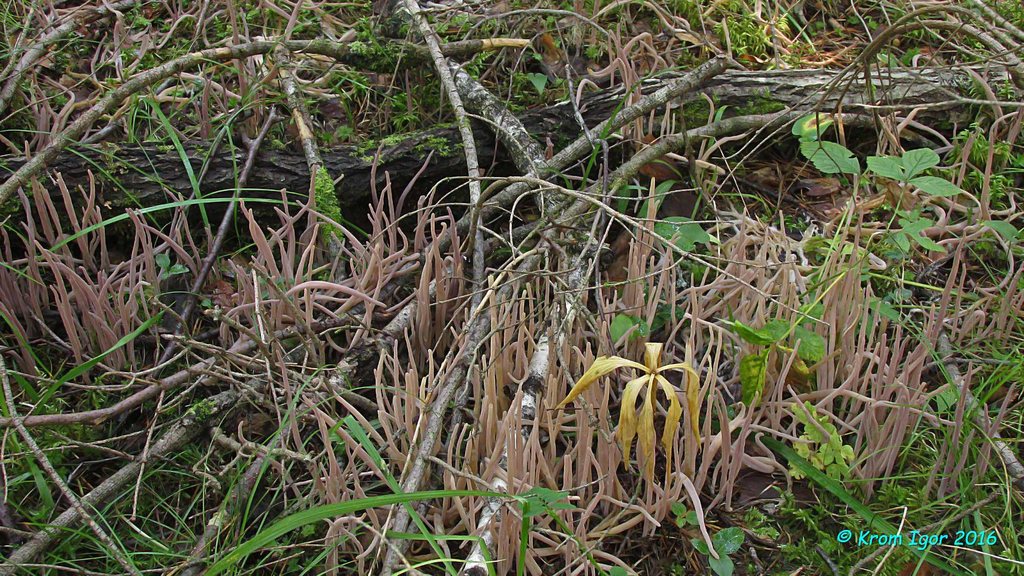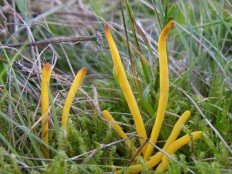Magical properties
The people have numerous signs associated with indoor plants. Meshcreasia is an indicator flower.
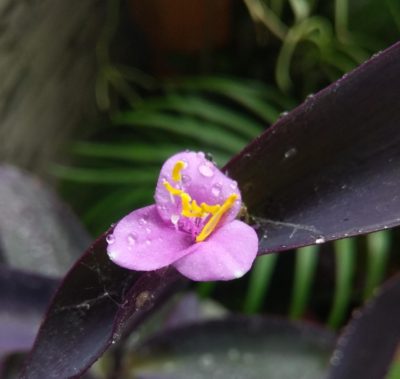
If you put it at home, then the electricity present in the room is instantly determined by the plant.
If a negative atmosphere reigns in the house and a person lives - an energy vampire, the leaves will rapidly turn yellow and crumble.
As for envious people, by giving them this kind of flower, it is possible to note in the near future that envy leaves them.
Using a flower for magical purposes, it is possible to protect oneself from unkind people, since the evil eye loses its own power where this plant resides.
Setcreasia purpurea has certain magical properties that are ready to assist its owner. The flower protects against a love spell, will be able to drive away negative emotions and release from stressful situations.
Alloclavaria purpurea (Alloclavaria purpurea)
Synonyms:
- Clavaria purpurea
- Clavaria purpurea
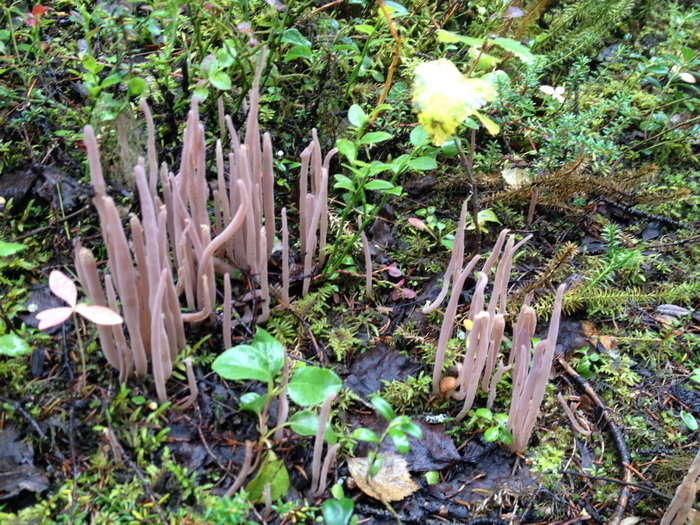
Description
Fruit body: narrow and long. From 2.5 to 10 centimeters in height, up to 14 is indicated as the maximum. A width of 2-6 millimeters. Cylindrical to nearly spindle shape, usually with a slightly pointed tip. Unbranched. Sometimes somewhat flattened or, as it were, "with a groove", it can be longitudinally furrowed. Dry, soft, brittle. The color can be dull purple to purplish brown, fading with age to light ocher. Other possible shades are described as: "isabella colors" - creamy brownish at the break; "Clay color", at the base as "army brown" - "army brown". Shaggy at the base, with a whitish "down". Fruiting bodies usually grow in bundles, sometimes quite dense, up to 20 pieces in one bundle-cluster.
Some sources describe the leg separately: poorly developed, lighter.
Flesh: whitish, purple, thin.
Smell and taste: almost indistinguishable. The smell is described as “soft, pleasant”.
Chemical reactions: absent (negative) or not described.
Spore powder: White.
Spores 8.5-12 x 4-4.5 µm, ellipsoidal, smooth, flowing. Basidia 4 spore. Cystidia up to 130 x 10 microns, cylindrical, thin-walled. Clamping connections are missing.
Ecology: Traditionally considered saprobiotic, there are suggestions that it is mycorrhizal or associated with mosses. Grows in densely packed clusters under conifers (pine, spruce), often in mosses. summer and autumn (also in winter in warmer climates)
Season and distribution
Summer and autumn (also in winter in warmer climates). Widespread in North America. Finds were recorded in Scandinavia, China, as well as in the temperate forests of the Russian Federation and European countries.
Edibility
Unknown. The fungus is not poisonous, at least no data on toxicity can be found. Some sources even come across some recipes and recommendations for cooking, but the reviews are so indistinct that it is completely incomprehensible what kind of mushroom they actually tried to cook there, it seems that it was not something that was not Clavaria purple, it was generally something- then, as they say, "not from this series," that is, not a horned, not clavulina, not clavaria.
Similar species
Alloclavaria purpurea is considered such an easily identifiable fungus that it is difficult to confuse it with something else. We probably won't need to use a microscope or a DNA sequencer to successfully identify a fungus. Clavaria zollingeri and Clavulina amethyst are vaguely similar, but their coral fruiting bodies are at least moderately branched (and often quite branched), they also appear in deciduous forests, and Alloclavaria purpurea loves conifers.
At the microscopic level, the fungus is easily and confidently identified by the presence of cystidia, which are absent in closely related species in Clavaria, Clavulina and Clavulinopsis.
Photo: Natalia Chukavova
Description of boletus pink-purple
The diameter of the pink-purple boletus cap ranges from 5 to 20 centimeters. The shape of a young cap is spherical, later it becomes convex with wavy edges. The skin is velvety and dry, but in rainy weather it is covered with a small layer of mucus.

The color of the pink-purple boletus is uneven: gray or gray-olive with wine, pink or red-brown zones. If you press on the mushroom, then its surface will be covered with dark blue spots. If the fungus is damaged by insects, yellow flesh becomes noticeable.
The tubular layer of this boletus is lemon yellow, and over time it becomes greenish yellow. The pores are small, orange-red or blood-red, and become bluish when pressed. Spore powder, olive brown.
The height of the pink-purple boletus leg reaches 15 centimeters, and its diameter reaches 7 centimeters. The shape of the stem in young mushrooms is tuberous, and later it becomes cylindrical with a clavate thickening. Its color is lemon yellow, there is a dense reddish mesh. When pressed, the mesh turns black or blue.

Young specimens have a tough lemon-yellow flesh. When damaged, the pulp instantly acquires a blue-black color, and after a while it becomes wine-colored. The pulp tastes sweet, and the aroma is slightly sour-fruity.
Places of growth of pink-purple boletus
Pink-purple boletus grows in hilly and mountainous areas. They settle on calcareous soils. They can be found in deciduous and mixed forests. They prefer to coexist with beeches and oaks.
Pink-purple boletus grows in Russia, Europe and Ukraine. They are common in warm climates.

The toxicity of pink-purple boletus
These mushrooms cannot be tasted raw, it is better not to pick them at all, since the poison remains in the undercooked fruit bodies. In general, these are rare mushrooms, which are also poorly understood, so it is better not to experiment with them.
Similarities to other mushrooms
Boletus pink-purple outwardly resembles the inedible satanic mushroom that grows in deciduous forests from June to September. But confusing these two types is not scary, since satanic mushrooms are not eaten. But the situation is different with the ordinary one, similar to the oak tree.
Common oak tree is a good edible mushroom. It grows in deciduous and mixed forests and bears fruit from May to September.

Other boletus
Royal boletus is an edible mushroom. The color of the cap of this mushroom is bright pink pink-purple or violet-red. The skin may have whitish mesh cracks. At first, the cap is convex, and over time it becomes cushion-shaped and can become completely flat. The diameter of the cap is 6-15 centimeters. The leg is long - about 15 centimeters, and thick - up to 6 centimeters in diameter. The color of the leg is yellowish brown.
Royal boletus grows in deciduous and beech forests. In our country, they are common in the Far East and the Caucasus. They are collected from June to September on sandy soils. The flesh of this delicious mushroom is dense and fragrant, therefore it is highly valued.
Boletus reticulated - an edible mushroom. He has a large hat - with a diameter of 8 to 30 centimeters, its shape changes from convex to cushion. The skin is slightly velvety, cracks and a characteristic mesh pattern appear in adulthood. The color of the cap is leathery brown, gray-brown or ocher. The leg is massive - up to 25 centimeters high and up to 7 centimeters thick, clavate. Along its entire length, it is covered with a pronounced mesh of a brownish or whitish color.
Boletus reticulated is one of the earliest species - it is found already in May, and fruiting continues until October.These mushrooms grow under beeches, oaks, lindens, edible chestnuts and hornbeams, that is, in deciduous forests. It is mainly found in hilly areas, with a preference for a warm climate. Boletus reticulated - one of the best mushrooms, very aromatic and tasty.


